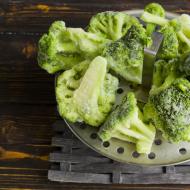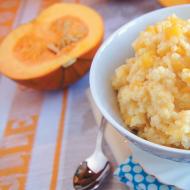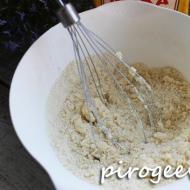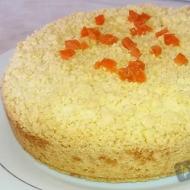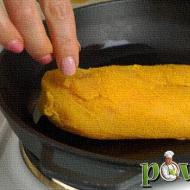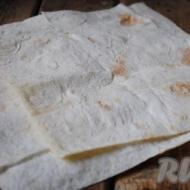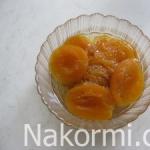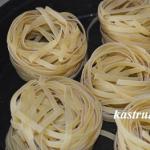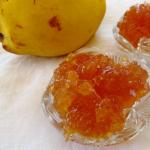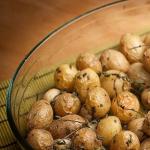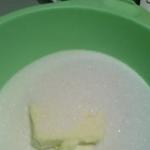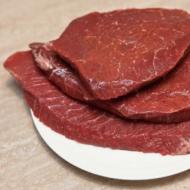
How is palm oil extracted? Palm oil: harm and benefit. Destroyed forest in Indonesia
Detailed description and chemical composition of palm oil. Beneficial properties of the product and possible harm to digestion, heart, blood vessels and figure. Methods of application in the food industry.
Description and composition of palm oil

Palm oil is a vegetable oil made from the pulp of the fruit of the oil palm tree. This tree grows on the islands of the Indian Ocean, in Asian countries and on the African continent. Fruit ripening is possible only in a humid and hot equatorial climate, at a temperature not lower than +24°C. To obtain a high-quality fraction, they must be ripe. The leaders in the export of this product are Sri Lanka, Indonesia, and Malaysia.
The oil looks like an almost transparent liquid with a slightly sweetish odor; it has no taste as such. At low temperatures, the composition acquires a semi-solid or creamy consistency and requires melting in a water bath or in a microwave oven.
To obtain this widely popular culinary ingredient, the method of pressing or boiling the pulp of palm fruits is used. In the first case, we are talking about cold pressing, due to which all the beneficial properties of the product are preserved. The second method involves heating them, as a result of which the temperature can reach 150-200 degrees. Naturally, after such treatment, more than 50% of the substances are lost.
Palm oil is virtually tasteless, making it a popular ingredient in cooking. It can be stored without spoiling for more than 2-3 months in the refrigerator and several days at room conditions. In the process of its production, additives known in the food industry are produced - olein and stearin, which are actively added to margarines.
The calorie content of palm oil per 100 g is 899 kcal, of which the main percentage is fat (99.7 g). Water accounts for only 0.1 g.
Of the vitamins, there is only alpha-tocopherol (E) - 33.1 mg, retinol (A). Things are also not very good with macroelements - the body can only get phosphorus, and then only 2 mg. But there are quite a lot of sterols here - as much as 100 mg. The situation with fatty acids is completely different.
Saturated fatty acids per 100 g:
- Caprylic - 3.3 g;
- Capric - 3.8 g;
- Lauric acid - 42.5 g;
- Myristic - 11.9 g;
- Palmitic - 6.3 g;
- Stearic acid - 7.4 g;
- Arachina - 1.1 g.
The characteristics of the main substances are as follows:
- Vitamin E. This is a powerful antioxidant, also known as alpha-tocopherol. It is a fat-soluble substance, does not settle in water and is almost completely preserved after exposure to high or low temperatures. Its benefit lies in protecting the body from premature aging and oxidative processes. With a deficiency of this vitamin, hair, nails and skin suffer, memory and mood deteriorate, and the functioning of the thyroid gland is disrupted.
- Vitamin A. Its other name is “retinol”; it is produced in the body from carotene. It is a natural antioxidant necessary for the normal functioning of the immune system, healthy hair, nails and skin, and metabolism.
- Phosphorus. This micronutrient present in palm oil is essential for good health of bones, teeth, hair and muscles. It is also important for brain function, metabolism, and cell regeneration. The daily human need for it, depending on age, is 1-3.8 g.
- Lauric acid. It is widely used to create soaps, creams and other cosmetics. This substance is known for its excellent ability to fight viruses and pathogenic microorganisms. Thanks to it, the feeling of hunger quickly disappears, the skin is moisturized, and mental activity improves.
- Palmitoleic acid. It belongs to the monounsaturated type and is one of the most useful. This substance is found in human subcutaneous fat and is necessary for the production of nerve cells, lowering blood pressure, and reducing the amount of cholesterol in the blood.
- Myristic acid. This is a readily soluble substance belonging to the class of saturated fatty acids. It forms compounds with calcium ions, is not absorbed in the intestines and is released along with the stool. Therefore, this component of the product does not have a significant impact on health.
Important! Considering that palm oil contains the most fatty acids, you should not get carried away with it.
Benefits of palm oil

This product is a powerful antioxidant that has a beneficial effect on the body's cells. It protects them from oxidation and the harmful effects of toxins, thereby preventing premature aging processes. This is a source of healthy unsaturated fats, which are vital for the normal functioning of the cardiovascular system. This is especially true for older people, who experience such problems much more often than younger people.
The list of beneficial properties of palm oil is as follows:
- Well satisfies hunger. Being high in calories and rich in carbohydrates, the product suppresses appetite and quickly gives a feeling of fullness.
- Improves brain function. Since this oil contains unsaturated fatty acids, it stimulates mental activity.
- Gives strength. This is possible due to the fact that the product contains triglycerides, which, when entering the bloodstream, saturate the cells with oxygen. This way you have more energy, improve your mood and improve your performance.
- Cleansing the body. Oleic and linoleic acids, of which there are quite a lot in the product, are necessary to reduce the level of bad cholesterol in the blood. This allows you to prevent various diseases of the heart and blood vessels - thrombosis, atherosclerosis, myocardial infarction, stroke, etc.
- Takes care of vision. In order for it to always remain good, the body must constantly receive vitamin A. You can meet the daily need for it by consuming at least 2 tsp. oils per day. This will help strengthen the retina and prevent its detachment, the development of cataracts and other ophthalmological diseases.
- Helps with exhaustion of the body. One of the indications for the use of palm oil is sudden weight loss. You can gain it due to the fact that it contains a lot of calories that provide energy.
Why is palm oil harmful?
Nutritionists are unfavorable towards palm oil. They explain their negative attitude towards it by the fact that it is oversaturated with harmful fats. It contains neither healthy proteins nor easily digestible carbohydrates. Another danger is that most of the oils sold are produced by the so-called hot pressing method. This process uses temperature treatment, during which not only almost half of all useful substances are lost, but also carcinogens accumulate in the oil. It is known that these substances cause serious harm to humans - they provoke the growth of tumors, the development of cardiovascular diseases, obesity and diabetes.
Harm of palm oil to the cardiovascular system

Unlike olive and corn oil, palm oil contains only 10% poly- and monounsaturated acids. The rest is saturated fats, which, according to numerous studies, can cause the formation of atherosclerotic plaques and increased cholesterol levels, which entails the development of hypertension, myocardial infarction, stroke, and Alzheimer's disease.
With regular abuse of this oil, the blood vessels become dirty, waste and toxins accumulate in them. All this leads to their narrowing and thinning of the walls. As a result, there are risks of complications in the form of varicose veins, the formation of blood clots and their rupture. It is also dangerous that such oil increases blood pressure, so it is strictly contraindicated for hypertensive patients.
Is palm oil bad for your figure?

This is one of the most high-calorie foods; 100 g contains almost 900 kcal. This is 1/3 of the daily requirement of an adult. We are talking here only about the raw product; when cooked, its nutritional properties almost double. As a result, consuming this oil has a negative impact on weight.
It has been proven that it disrupts metabolism, “clogs” the intestines, blood vessels and liver, and prevents cleansing of the body. All this leads to an increase in body weight, and over time, if nothing is done, to the development of obesity.
The harm of palm oil for the figure lies in the fact that it is poorly digested and absorbed. Its remnants accumulate in the subcutaneous fat layer and lead to weight gain. Those who are naturally inclined to be overweight should be especially attentive to this.
Harmful of palm oil for digestion

This product is very difficult for the stomach: not only does it take a long time and is difficult to digest, it also often causes severe heartburn. In some cases, its use leads to bloating, constipation or diarrhea. Most often this occurs with gastritis, colitis, biliary dyskinesia. It increases the level of bilirubin in the blood and inhibits the functioning of the pancreas.
This product also has a negative effect on the liver, saturating it with harmful fats. This can lead to fatty liver disease and even cirrhosis. The substances contained in it irritate the intestinal and stomach mucosa, contaminate them, cause attacks of abdominal pain and increase the risk of tumor growth.
Such problems can arise when consuming both raw and heat-treated oil. But the first one is still not so harmful. Metabolism and pancreatic dysfunction predisposes to the development of type 1 or type 2 diabetes mellitus.
Due to the refractoriness of the oil, it is difficult to digest and absorb by the body, and what remains in the body as a result of this is not excreted anywhere. Thus, its intoxication occurs, which already affects the general well-being.
Important! Some countries have banned or restricted the import of this product because it is considered hazardous to health and even addictive, like nicotine or caffeine.
Features of the use of palm oil in nutrition

It is a widely used ingredient for making baked goods - pies, bread, cakes, cookies, etc. It is often added to candies to give them hardness and increase shelf life. It is the basis for the production of margarine, which can significantly reduce the cost of the product. In fact, this is a real food additive designed to change the taste properties of a particular product.
Palm oil can often be found among the ingredients in crackers, sauces, and chips. Sometimes French fries are fried on it. It is popular as a replacement for other vegetable oils, since it is consumed much more economically. The use of this ingredient is not excluded even in the creation of baby food and various semi-finished products.
The main task of palm oil is to improve the presentation of products and their taste, increase shelf life and reduce cost. Despite its significant harm to health, it is one of the main preservatives in the food industry. It is temperature resistant, practically odorless and tasteless, and easily combined with all products.
Oil palm oil in its raw form perfectly complements fresh salads of vegetables and fruits. The product obtained by hot pressing can be used for frying, boiling, stewing, and baking. It makes excellent frying for first courses and various sauces.
Here are some interesting recipes with palm oil:
- Casserole. Add the juice of one lemon to cold water (2-3 l) and rinse young crabs (no more than 300 g) in it. After this, pour vegetable oil into a hot frying pan and fry this ingredient. While it's cooking, crush the garlic (5 cloves) with a masher and add it to the crabs. Now salt and pepper the mixture, add onion cut into rings, chopped carrots and pepper (1 piece each). Next, just simmer the mixture thoroughly under the lid for 20-30 minutes and add 2 tbsp before turning off. l. palm oil.
- Stew. Peel and chop the onion (1 pc.), carrots (1 pc.), bell pepper (1 pc.), garlic (5 cloves) and tomatoes (2 pcs.) poured boiling water. Next, fry it all in palm oil, cover with water and simmer covered for 15-20 minutes. Before turning off the burner, add chopped basil, salt, ground black pepper, celery and sugar to taste. It is served cold.
- Stuffed eggplants. Wash them (4 pieces), cut them in half, remove the middle and soak in warm, salty water for 10 minutes. This is necessary for the bitterness to go away. Next, rinse, peel and chop the champignons (600 g), tomatoes (4 pcs.), garlic (4 cloves) and onion (1 head). All this must first be fried in a large amount of palm oil, and then used as a filling for eggplants. Then they should be baked in the oven and decorated with grated cheese.
- Snack. Grate the peeled ginger root, which should be no more than 2 tbsp. l. and garlic (2 cloves). Combine them with the juice of half a lemon, 1 tbsp. l. chopped walnuts, palm oil (3 tbsp), pepper and salt to taste, balsamic vinegar (2 tbsp). Now wash and cut the cucumbers (5-6 pieces) into slices, and then place them on a plate, garnish with spinach and pour over the prepared sauce.
Palm fruit oil is one of the most controversial products. What are the benefits and harms of palm oil, and is it generally suitable for consumption?
What is palm oil made from?
The raw material for the production of the product is the oil palm - or rather, its fruits and seeds. Ordinary oil, which can be purchased in stores, is made from the pulp of the fruit - they are boiled, and then the separated fat is collected and subjected to purification and processing.
Oil is also produced from the seeds of palm fruits - only it is called differently, “palm kernel”, and has completely different properties.
Varieties of palm oil
Oil obtained from palm fruits is divided into three main varieties.
- Raw red oil- this is a quite useful product, made by cold pressing with maximum preservation of valuable substances. The benefit of red palm oil is that it contains a huge amount of carotene and coenzyme Q. Valuable properties strengthen the immune system and slow down the aging process. The product is expensive and is found mainly on pharmacy counters. It is occasionally used to make baked goods and other products, but in general its use in the food industry is not economically viable.
- Refined oil that has been refined and deodorized- the most inexpensive and popular variety. The benefits of the product are much less, since the lion's share of valuable substances is lost during processing. The composition contains both vitamins and compounds that are potentially harmful to health. The refined variety is found everywhere - in confectionery, cheeses and sauces, and semi-finished products.
- Technical oil- the most harmful variety with a low degree of purification after processing. The product is saturated with trans fats, causing increased cholesterol levels and even cancer. In principle, it should not be used as food, since it is intended for the pharmaceutical sector and industry - however, it is used by unscrupulous manufacturers. It is the properties of technical fat that are largely responsible for the bad reputation of the product.

Composition and nutritional value of palm oil
Red oil, which has not been processed, has the richest composition. The useful product contains the following substances:
- unsaturated fatty acids - linoleic and oleic;
- saturated fatty acids - primarily palmitic;
- vitamins A, E, K1 and B4, B3;
- valuable coenzyme Q10;
- stearic acid;
- triglycerols and tocopherols;
- carotenoids;
- iron and phosphorus;
- lecithin and phytosterols.
The calorie content of 100 g of product is quite high - 899 calories, with the entire volume occupied by fats.
Attention! During refining, the initially useful product is deprived of some valuable substances - more precisely, their concentration is greatly reduced. This is why it is recommended to use red palm oil for medicinal purposes - despite the higher price.

What are the benefits of palm oil for humans?
If we consider the most natural type of product, the benefits of palm oil for the body are that it:
- has an antioxidant effect on the body;
- strengthens the visual apparatus due to the high content of vitamin A;
- serves as a good prevention of cancer;
- strengthens joints;
- has a wound healing and anti-inflammatory effect;
- tones the body.
Is palm oil good for pregnant and lactating women?
During the period of bearing a child, only unprocessed red pomace is allowed for consumption - as a rich and healthy source of vitamins. You can take it in an amount of no more than 1 teaspoon per day. But the refined product should not be introduced into the diet - on the contrary, it is better to exclude all “palm” dishes from the diet.

It is strictly forbidden to consume solid fat that is excessively saturated with acids. The harm consists of a huge amount of cholesterol and a negative effect on the absorption of calcium.
The same applies to the lactation period. In the absence of negative manifestations on the part of the baby, healthy red oil can be consumed 1 spoon per day, its properties will be beneficial. But any other varieties must be removed from the mother’s diet.
Is it possible to give palm oil to children?
It is allowed to introduce a healthy natural product into a baby’s diet for the first time no earlier than at the age of 6 months. And we are only talking about unprocessed healing oil, which can be offered in half a teaspoon. Along with the product, the baby’s body will receive vitamins A and E. By 3 years, the dosage can be increased to 1 teaspoon.
Refined palm oil for newborns is strictly prohibited, as are solid varieties of the product.

Important! The product falls into a high-risk group, so before offering even a very high-quality squeeze to your baby, you need to consult a pediatrician.
Palm oil for weight loss
Despite the fact that a natural product may be beneficial, on a diet it will only do harm - the calorie content is too high, and there are no fat-burning properties.
Use of palm oil in folk medicine
The beneficial properties of the product are highly valued in folk medicine. They treat:
- eye diseases - glaucoma, conjunctivitis;
- skin dermatitis;
- cold;
- inflammation of the genitourinary tract;
- lack of hemoglobin;
- joint ailments.
This useful product also helps with stress and anxiety, chronic fatigue, menopause or menstrual pain.

For periodontal disease
If the mucous membranes of the mouth are inflamed, you can soak a sterile gauze pad in red oil and apply it to the gums for a few minutes. The procedure must be repeated daily for 2 weeks.
For joint pain
For arthritis or gout, 15 ml of palm fruit squeeze is mixed with other ingredients - for example, a few drops of lemon, pine or lavender oil. The product is rubbed into the sore joints; it is recommended to continue treatment for at least 2 weeks.
For dermatitis
For psoriasis, lichen or eczema, you can mix 80 ml of the product with 20 ml of walnut extract, add a teaspoon of birch tar, and stir thoroughly. Problem areas of the skin are lubricated twice a day for 14 days.

Palm oil in cosmetology
Even industrial cosmetology actively uses the beneficial properties of the product. Palm oil in cosmetics is found in masks and creams for dry and aging skin, and is also included in regular and aromatic candles. Palm oil is present in soap, which gives it a firm consistency.
The product is also used in home beauty recipes.
For facial skin
The product perfectly softens dry skin, has a rejuvenating and anti-inflammatory effect.
- A mask based on palm and apricot oils, taken in equal proportions, will remove the first wrinkles and restore skin tone. Keep the mixture on your face for about 15 minutes until it is absorbed. Then you can wash your face with warm water.
- A mask made from palm and olive oils will improve the condition of dry skin. Before use, you need to wash your face and then apply the product to a damp face using gentle, lightly patting movements.
The benefits of both masks will be maximum if you do them for 2 weeks in a row, once every 2 to 3 days.

For hair
Since the product contains a large amount of antioxidants, vitamin E and carotenoids, the hair becomes softer, more manageable, and gains shine.
Using the hair care product is very simple.
- To make your hair stronger and more voluminous, just add a couple of drops of the extract to your regular shampoo.
- To soften too dry scalp, 2-3 times a week you can make masks based on this product and other vegetable oils, rubbing them into the hair roots for half an hour.
For body
The properties of the liquid or melted product are excellent for improving skin tone throughout the body.
- For anti-cellulite massage, you need to mix 3 teaspoons of palm fruit extract with a few drops of olive, lemon, and dill oil. The product is rubbed into problem areas twice a day with careful but strong movements.
- The product will make postoperative stitches less noticeable if you mix it in the amount of 3 spoons with a few drops of clove, peppermint, rosemary oil. The scar is lubricated with the product twice a day for 10 days, then a break is taken for a couple of weeks, then the procedure is resumed.

Daily intake of palm oil
The harmless dosage of the product depends on the variety. Thus, the most useful unprocessed red oil can be consumed 2 teaspoons per day. As for purified species, the total daily amount should not exceed 10 g.
Harm of palm oil and contraindications
The benefits of a quality product are undeniable - and yet some properties give the oil a bad reputation. The harm lies in the fact that the processed and refined product:
- contains too many saturated fatty acids and has a high melting point - that is, it increases cholesterol levels and is bad for the heart;
- may contain carcinogens and contribute to the occurrence of cancer;
- leads to weight gain and obesity;
- provokes the development of diabetes, atherosclerosis and Alzheimer's disease.

Thus, the product is strictly prohibited for use if you are prone to the listed diseases - stomach and heart ailments, excess weight, high levels of bad cholesterol.
Advice! You should not eat hydrogenated palm oil - the benefits are minimal, but the harm is great, since the product contains a lot of trans fats.
What foods contain palm oil?
One way or another, palm fat is included in many food products. For example, you can find palm oil in candies, margarines and chocolate, ice cream and chips. The raw material is used in the production of condensed milk and mayonnaise, sausages and semi-finished products, bakery products - it is very cheap and at the same time has preservative properties, that is, it extends the shelf life of products.

The product is found even in infant formulas. The benefit of palm oil in baby food is that it saturates the baby’s body with vitamins A and E. And most importantly, palmitic acid, which can potentially cause harm, is still necessary for the child’s body in small quantities. It is a component of mother's milk and is especially important for children growing up on artificial formula.
How to determine the presence of palm oil in products
In small quantities, palm fat does not cause serious harm. But for your daily diet, it is better to choose products that do not contain this component. Understanding whether a product contains an undesirable ingredient is quite simple.

- Palm fat is a good preservative. If a perishable product - for example, dairy - has an expiration date that is too long, this indicates the presence of an ingredient in the composition.
- If the technology for manufacturing a product does not allow the use of palm fat, but it is still present in the composition, this will be reflected in the name. For example, condensed milk will be called a “milk-containing product”, sour cream - “sour cream”, and so on.
- If the product is priced too low, then the manufacturer probably saved on ingredients and introduced cheap raw materials, despite the possible harm.
Conclusion
The benefits and harms of palm oil depend on the variety, the degree of naturalness, and the daily amount when consumed. It is best to opt for unprocessed red pomace, the properties of which are the most valuable, and consume other types in minimal doses.
Palm oil is now used in many food products.. It is added everywhere, it improves the taste and structure of products. This component is also actively used in the manufacture of various cosmetics that are designed to improve skin and hair. But is this component really useful? This question is especially of concern to those people who actively monitor the condition of their figure. Therefore, before consuming palm oil, the harm and benefits of this product must be fully studied.
What is this product
Palm oil is a type of oil that is made by squeezing special varieties of palm fruits. It is not extracted from seeds, as, for example, vegetable or flaxseed oil is obtained, but from the pulp of fruits. But the oil that is extracted from the seeds is called palm kernel oil.
The type of palm tree from the fruits of which this product is extracted grows in regions of countries such as Africa, Malaysia, and Indonesia. Due to the low cost of this raw material, it is actively used in the food and cosmetics industries.
Chemical composition
Palm oil is found in food and cosmetic products. So why is it actively used? Firstly, it has a fairly low cost, and secondly, this product has a very rich composition. This type of oil contains the following elements:
- carotenoids. These elements take an active part in many vital processes of the body that are necessary for the normal functioning of the entire organism;
- vitamin E. The composition includes a vitamin that consists of isomers of tocotrienols and tocopherols;
- vitamin K. This element ensures increased safety of the body from all kinds of complications - ossification of cartilage, salt deposits on the area of the walls of blood vessels and others;
- polyunsaturated acids, which are classified as omega 3 and omega 6;
- palmitic acids, they account for about 50% of the total volume. This type of fatty acid is a source of energy for the body and takes part in the process of synthesizing hormones;
- Oleic acid belongs to the group of monosaturated fats. This type of acid prevents the formation of cholesterol plaques in blood vessels;
- stearic acid;
- vitamin A and B4;
- macro- and microelements, including a high content of iron and phosphorus;
- coenzyme Q10.
High quality palm oil is obtained only after several processing procedures. In the manufacture of this product, the method of pressing and squeezing is used, after which a technical product is formed that is unsuitable for food. In order to obtain real oil containing all of the above components, the raw material undergoes five stages of processing:
- Cleansing.
- Hydration.
- Neutralization.
- Deodorization.
- Lightening.
After five stages of production, the finished product can be used for food production, and can also be safely consumed in its pure form.
Varieties
In the production of palm oil, several types are produced, depending on the quality and constituent components, each type is used in different areas. So, there are three types of oil:
- Red palm oil. This is the most natural look. For its production, the most gentle technologies are used, which allow preserving the maximum amount of nutrients. The red color of this raw material is due to the increased content of carotenoids. This product has an odor and a sweet taste. It is used for consumption raw.
- Refined deodorized. Compared to the red type, this oil has a different structure. It is colorless and odorless. It is produced specifically for use in the food industry. It is not palatable in foods, but it does improve the texture and flavor of many food ingredients.
- Technical view. This type is of low quality and is not suitable for food processing. It is used in the production of cosmetics - soap, cosmetics, shampoos and other components.
Characteristics of properties
Before you understand why palm oil is harmful or beneficial for the human body, you should carefully consider all its properties. Still, this type of raw material has recently been used for the manufacture of many cosmetic and food products, so it is important to know what properties it has.
The main qualities of this raw material: 
- Natural palm oil product has a reddish or red-orange structure, which is why it is also called red. This type of raw material has a nutty taste and smell;
- When this product is kept at room temperature, it acquires a liquid consistency; if the temperature rises, it acquires a viscous structure, and at temperatures below zero it begins to harden.
- Has increased resistance to oxidation, so it can be stored for a long period without losing its main characteristics.
- This product has high fat content. The composition of this raw material is quite extensive; it contains a high content of fatty acids, which have a beneficial effect on the human body and are quickly absorbed by it.
- Natural red oil has increased antibacterial and wound-healing properties. Therefore, when it is consumed, the development of pathogenic microorganisms is eliminated. In addition, it prevents the occurrence of inflammatory processes.
Health Benefits
Despite the fact that many argue that this raw material is quite harmful and has a large number of harmful elements, it is still actively used for the manufacture of food products, and natural red raw materials are consumed directly in its raw form. If the benefits and harms of palm oil for human health are compared, then there will be much more beneficial qualities. To understand this, it is worth considering the main useful qualities of this product: 
- Due to the fact that red oil contains a high content of carotenoids, it has an increased level of antioxidant effect. The impact of these substances improves the skin and hair.
- The increased content of vitamin E also provides antioxidant properties to this product. This component belongs to the “youth” vitamins. It actively fights skin aging and also neutralizes the harmful effects of free radicals. This property prevents such dangerous diseases as cancer.
- The triglycides included in the composition are quickly digested when they enter the body. These components penetrate the liver, but they do not penetrate into the bloodstream. Due to this property, this product is recommended for use by people who monitor the condition of their figure, as well as by those who do not accept other types of fat well.
- Due to the content of unsaturated fats when consuming this product blood cholesterol levels decrease, which ultimately reduces the risk of heart attack and stroke many times over. In addition, these substances participate in the formation of the skeletal system, help increase joint mobility, and improve the quality of the skin.
- Benefits of provitamin A. This component is necessary to improve vision, especially for children. Therefore, oil is often found in baby food. This element improves the performance of the analyzer, helps the active production of pigment, which is responsible for visual functions and is located in the retina.
Thanks to such a large list of beneficial properties, this product is often included in the list of beneficial foods for the human body. But still, you shouldn’t draw final conclusions; you definitely need to consider the harmful properties of palm oil.
Harmful properties
Why is palm oil harmful to humans? This question worries many people who carefully monitor the health of their body. Of course, you definitely need to know what harm palm oil does to the body, because your general condition depends on it.
 So, the negative impact of palm oil can arise from several factors:
So, the negative impact of palm oil can arise from several factors:
- The component contains an increased level of saturated fat. Therefore, its consumption should be limited. What harm can there be from palm oil in food? Excessive consumption of foods containing high levels of these raw materials can cause vascular and heart problems, thereby increasing the risk of heart disease.
- Reduced content of linoleic acid. Palm oil contains only 5% of this component, but other types of vegetable oils contain 71-76%. Therefore, this type of oil has low value.
- Due to the fact that this type of oil has increased refractoriness, it difficult to remove from the body. If there is an excessive amount of this product in the diet, then undigested residues in the body clog the blood vessels and impair the functioning of the digestive system. This product has increased carcinogenic properties and is quite difficult to remove.
Therefore, many doctors recommend that when consuming palm oil, additionally consume foods that improve intestinal activity and promote the active elimination of carcinogenic components and toxins. You should definitely visit saunas and steam baths. It is also recommended to maintain an active lifestyle. By following all these recommendations, you can quickly remove harmful substances from the body, as well as carry out high-quality cleaning of internal organs.
Palm oil content in infant formulas
 For many parents, the use of palm oil in infant formula causes horror and fear for the health of their child. People often ask the main question - why is palm kernel oil used in baby food? So why is palm oil harmful in baby formula? Many nutritionists and children's doctors argue that if the composition contains natural palm kernel oil, then parents' concerns are not in vain. This substance can have a negative effect on the digestive system of an infant and in the future can cause the development of many serious diseases.
For many parents, the use of palm oil in infant formula causes horror and fear for the health of their child. People often ask the main question - why is palm kernel oil used in baby food? So why is palm oil harmful in baby formula? Many nutritionists and children's doctors argue that if the composition contains natural palm kernel oil, then parents' concerns are not in vain. This substance can have a negative effect on the digestive system of an infant and in the future can cause the development of many serious diseases.
But modern manufacturers of infant formula do not use palm kernel acid, but palmitic acid, which is obtained after technological processing of the product. Thanks to the use of modern technologies in production, the most adapted products based on vegetable fat are created, which can be used without problems to feed infants.
Typically, for the production of infant formula, whey is used, which during the processing process loses some of its easily digestible proteins and microelements. But to replenish these useful elements, palmitic acid is added. This the component allows you to bring baby formula as close as possible to the structure of breast milk.
Palm oil has both beneficial and harmful qualities that must be taken into account when using it. But you should not assume that this product is poison and should be completely excluded from your diet. The first thing to do is to reduce the level of its use. This product can be consumed, but preferably in small quantities.
 In addition, when purchasing some products you should follow important recommendations:
In addition, when purchasing some products you should follow important recommendations:
- Buy and consume ice cream, confectionery and bakery products as little as possible.
- When purchasing food products, be sure to carefully study the descriptions on the packages. If there is a vague phrase “vegetable fat”, then this property will indicate the low quality of the product. Conscientious manufacturers always indicate that the product contains palm oil, rather than hiding its presence.
- You need to buy products that are made in accordance with GOST, and not according to technical regulations.
- If the product is stored for a long period, it means that it contains a high content of palm oil.
- You should completely give up fast food.
In any case, you should follow important recommendations when using this product. You should not assume that palm oil has a strong negative impact on health, it just needs to be consumed correctly. There is no need to abuse it. And in moderate quantities, instead of being harmful, this oil, on the contrary, will have a positive effect on health.
We are all accustomed to thinking that palm oil is one of the cheapest and lowest-quality food products. But did you know that this is one of the oldest products that was used in Ancient Egypt.
Today, palm oil is the most popular vegetable oil, found in almost half of all packaged foods sold in supermarkets. Now we invite you to travel to Southeast Asia to take a look at exactly how this oil is made.
Since the demand for cheap palm oil is very high, there are more and more palm plantations. To achieve this, thousands of square kilometers of forests and peatlands are completely destroyed.
Here you can just see new plantings of oil palm trees, behind which the process of forest destruction is in full swing.
This forest has already begun to be burned to make way for new plantations.

Destroyed forest in Indonesia.

The productivity of oil palms is amazing: it takes about two hectares of land to produce one ton of oil.

Deforestation for palm plantations is leading to a decline in the orangutan population. These intelligent monkeys live primarily in trees, so the destruction of their natural habitat has left only 14,000 orangutans in Sumatra.

This is what oil palm fruits look like.

To produce palm oil, palm fruit pulp is required.

Sectional view of oil palm fruits.

These areas were once covered with forest, now it is completely burned out, and the vacated land awaits the planting of new palm trees.

But elephants like palm plantations; giants happily eat oil palm leaves.

For this reason, special elephant patrols are organized on plantations to protect the territory from wild elephants.

A worker cuts fruit.

To create oil, the palm fruit is first crushed and then heated, causing the oil to separate from the pulp. But first the fruits must be collected.

On the question of benefits. It is known that high-quality palm oil is absorbed by the human body by 97.5%, and this is an excellent result. In addition, palm oil holds the record for the content of vitamins E and A.

Although palm oil does not contain cholesterol, the palmitic acid present in it can stimulate the generation of cholesterol by the body itself.

According to nutritional scientists, high-quality edible palm oil is not hazardous to health. But often industrial palm oil is imported into Russia under the guise of food.

Elephant Patrol.

A plantation worker in Indonesia carries the harvest.

Palm oil can easily be called a vegetable analogue of butter, but its scope of application is much wider: it is difficult to imagine the modern cosmetic, technical and especially food industries without it. This substance is obtained from oil palms, which grow only in Indonesia, Malaysia and Thailand, but according to the World Wildlife Fund, 50% of packaged foods worldwide contain this product. How does such a component affect the health of consumers and what is more beneficial or harmful in it - let's find out together.
Oil characteristics
Depending on the type of processing, different types of oil can be made from oil palm raw materials:
- The most expensive subspecies, which has a slightly sweet taste and pleasant smell, and its color corresponds to its name. During processing, harmful substances are removed from it, while leaving vitamins and beneficial microelements. Experts equate this type of palm oil to olive oil in quality. It is used as an ingredient in sauces and as a topping for salads, as it is best consumed raw.

Did you know?Oil palm trees require huge areas to grow, so Indonesia practices forest burning to clear land for plantations. This process has reached such proportions that this small country took third placein the world(after China and the USA) in terms of greenhouse gas emissions.

The nutritional value
The main advantage of palm oil over analogues of animal and plant origin is the low cost of its production. However, at the same time, it retains a lot of useful substances that are difficult to find in any other.
Did you know?Palm trees grow on the coast of the Gulf of Guinea, the juice of which, when thickened, tastes very similar to butter.
Vitamins
It contains two extremely beneficial vitamins for humans:
- , or carotene. It is this that gives the extract its reddish tint, because the oil palm fruit contains 16 times more carotene than carrots. This vitamin provides visual acuity while protecting the eyes from harmful radiation, and also works as a natural antioxidant, removing toxins from the body and speeding up metabolism. As a result, wounds heal faster, hormone production is normalized and the immune system is strengthened.
- in two forms. Its task is to prolong youth by filling the skin with collagen, increasing muscle mass, and strengthening the walls of blood vessels. It has a positive effect on the reproductive function of the body, helps it absorb iron, thus ensuring the prevention of anemia. This same vitamin guards the calm of the nervous system, preventing stress.
Useful acids and coenzymes
Along with vitamins, palm oil also contains other components that make it special:
- Palmitic fatty acid. It promotes the appearance in the human blood of natural “enemies” of bad cholesterol - lipoproteins, which prevent the formation of blood clots, thereby protecting the heart from overload.
- Unsaturated fatty acids and. Their complex effect on the body is manifested in improving the condition of the skin, restoring the nervous system, and adjusting hormonal levels.
Important!According to recent scientific research, these acids are effective in preventing certain types of cancer and Alzheimer's disease.
- Coenzyme Q10. This “undervitamin” is “fuel” for the main muscle in the human body - the cardiac myocardium. Lack of Q10 leads to heart problems (ischemia, heart attack, stroke, atherosclerosis, etc.) and diseases associated with them: chronic fatigue, kidney disease, lung disease, oncology.
Calorie content
Since palm oil consists of more than 90% of various fats, it has a fairly high calorie content - 900 kcal per 100 g of product.

BJU
This product is completely free of proteins and carbohydrates, and the fat level is 99.9 g per 100 g of product.
What are the benefits of palm oil
Even the most ardent opponents of this herbal miracle cannot deny its beneficial properties.
Scientists attribute the following facts to the advantages of the product:- Benefits for the heart and blood vessels, which are provided by the interaction of vitamins and amino acids.
- Consumption of palm oil greatly reduces the risk of eye diseases (cataracts, macular degeneration, night blindness).
- It stimulates the digestive system, promoting the formation of bile, removing fat from the liver and healing erosions on the sensitive surface of the gastric mucosa.
- In diabetic patients, this product reduces the need for insulin and reduces the risks of developing complications of this disease. Vitamin A, with the support of Omega-6 and Omega-9, stabilizes blood sugar levels, restoring the body's functioning.
- As an additional remedy, oil palm fruit extract is used in the treatment of respiratory diseases.
 This oil is especially useful for women. During pregnancy, carotenoids and vitamin E contribute to the full development of the embryo. During feeding, this additive improves the taste of milk, and during menopause it prevents the occurrence of osteoporosis. Particular attention is paid to palm oil in the treatment of cancer of the breast, cervix and other organs of the female reproductive system.
This oil is especially useful for women. During pregnancy, carotenoids and vitamin E contribute to the full development of the embryo. During feeding, this additive improves the taste of milk, and during menopause it prevents the occurrence of osteoporosis. Particular attention is paid to palm oil in the treatment of cancer of the breast, cervix and other organs of the female reproductive system. Is the product good for children?
For a long time there has been debate about whether palm oil can be consumed by children. The fact is that the processes of food processing in a child’s body differ from those of an adult. The end to this dispute has not yet been reached, since the situation is quite complex.
On the one hand, studies on infant formula with palm oil have shown that palmitic acid from its composition mixes with calcium in the baby’s stomach, causing the removal of the beneficial mineral from the body. Thus, the child not only does not receive healthy fat, but also loses calcium, which is so important for him during this period. Additional unpleasant surprises will also include colic, belching and bloating after taking such mixtures.
Important!On the other hand, vitamins A, E, and Omega-6 acid from palm extract are perfectly processed by the child’s body, helping to strengthen the immune system and form teeth and bones.
In the first years of a baby’s life, doctors advise young parents to refrain from such a product in the child’s diet, since the likelihood of harm is still higher due to the characteristics of the growing body.
How exaggerated is the harm?
But what harm is possible from palm oil for adults is worth looking into more carefully. Due to its active use in modern life, myths about it are also multiplying. Therefore, it is important to understand what information about palm oil is true.
What harm can palm oil do?
The dangers of the product are evidenced by the fact that developed countries are now actively campaigning to reduce its market share, and also oblige manufacturers to indicate on the packaging information about the presence of palm extract. Such actions are caused by the fact that:
- Palm oil melts at a temperature an order of magnitude higher than human temperature, 36–37 °C, so when it enters our body it solidifies in the form of droplets or grains. They settle on the walls of the stomach, causing disturbances in its functioning and thereby loading the heart with additional work.
- In case of violations during the production process, the oil turns into a strong carcinogen, which can cause the awakening of cancer cells in the body.
- It is often used as a flavor enhancer in sauces, hamburgers, chips, and ice cream. This component causes addiction in the consumer, making him want the tasty product again and again.
Did you know?Palm trees only grow at night. During the day, due to high temperatures, their growth stops.
These facts about oil have a scientific basis, but modern media have spread on their basis a considerable number of rumors about this already controversial product.
Myths about an exotic product
Let's now figure out what you shouldn't believe.
Myth No. 2. Palm oil is not digested due to the human body's insufficient temperature. In this case, the authors of this myth confused completely different concepts. Yes, it does not turn into liquid fat in our stomachs, but this absolutely does not prevent it from being digested. Another thing is that if you consume it in large quantities, the body simply cannot cope with processing such a heavy product, and fat particles will begin to enter the blood, causing blockage of blood vessels there over time. Myth No. 1. Palm oil is cheap, which is why it is so actively used in the food industry. This statement is true only for certain categories of extract, which, in accordance with world nutrition standards, cannot be consumed. But a high-quality product made from palm raw materials is comparable in price to good sunflower oil.
Myth No. 1. Palm oil is cheap, which is why it is so actively used in the food industry. This statement is true only for certain categories of extract, which, in accordance with world nutrition standards, cannot be consumed. But a high-quality product made from palm raw materials is comparable in price to good sunflower oil.Myth No. 3. Palm oil is banned in developed countries. Do not confuse “prohibited” and “not recommended”. No country has yet been able to completely abandon snacks, chips and other spicy-sweet-sour bacchanalia of tastes. However, governments that truly care about the health of their nation are still trying to reduce the amount of palm product consumed.

Did you know?The inventor of chips, George Crum, never ate his invention. That is why, as evil tongues claim, he lived for 92 years.
Myth No. 4. Palm oil is suitable only for technical needs. The same thing has been said for a long time about the very useful corn extract and the lesser-known (but not inferior in benefits) rapeseed extract. But no, the palm analogue is a fairly multifunctional product, which, depending on the degree of its purification, can be used in both the food and industrial sectors.Cosmetological properties
As for cosmetology, there is no debate in this area about the harm of palm oil, and all experts unanimously say that:
- it nourishes and moisturizes the skin;
- cleanses and removes toxins;
- rejuvenates the skin and removes puffiness;
- adds collagen to the dermis, making it more elastic.
 Palm oil works effectively in the form of face and hair masks.
Palm oil works effectively in the form of face and hair masks. Face masks
A moisturizing mask is perfect for regular use, the vitamins of which will strengthen the facial vessels and replenish the lack of useful elements. It's easy to prepare using:
- 5 g palm extract;
- 10 g white clay;
- 5 ml lime juice.
 Your skin will be extremely grateful for such a spa treatment three times a week. If you have problems with acne or inflammation, then use a mask based on rice flour to eliminate them. It contains:
Your skin will be extremely grateful for such a spa treatment three times a week. If you have problems with acne or inflammation, then use a mask based on rice flour to eliminate them. It contains: - 3 g palm oil;
- 10 g rice flour;
- 1 aloe leaf.
Hair masks
To strengthen the roots and accelerate hair growth, use a nourishing mask based on various oils. The recipe for its preparation is simple:
- 20 g palm oil;
- 10 g coconut;
- 4 drops clove;
- 4–5 drops.
Did you know?Normal healthy human hair contains 14 elements, including gold.
Combine the liquids in a small container and heat gently until the palm oil melts. Apply this cocktail warm to dry hair, massaging into the roots. For better absorption, wear a shower cap or wrap a towel around your head. It is advisable to keep the mask on for 3–4 hours.
 Then wash it off. Approach this process carefully: for the first session, take a mild shampoo and treat your hair with it twice. The procedure will be more effective if carried out once every 2 weeks: the first time with a mild shampoo, the second time with a product for deep hair cleansing. But colored hair will like a mask with ylang-ylang, which is carried out after the next correction:
Then wash it off. Approach this process carefully: for the first session, take a mild shampoo and treat your hair with it twice. The procedure will be more effective if carried out once every 2 weeks: the first time with a mild shampoo, the second time with a product for deep hair cleansing. But colored hair will like a mask with ylang-ylang, which is carried out after the next correction:- take 1 tbsp. l. palm oil;
- mix it with fresh chicken yolk;
- add 50 ml of well-heated water with 5-7 drops of ylang-ylang.


